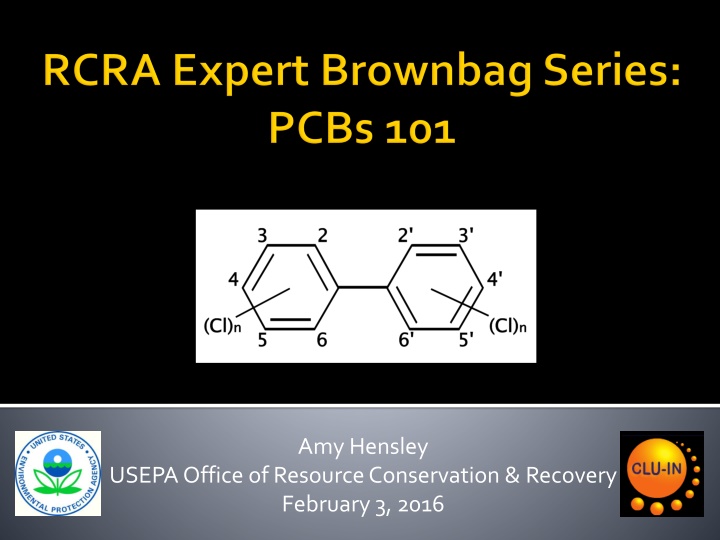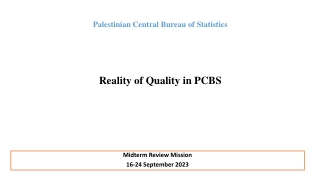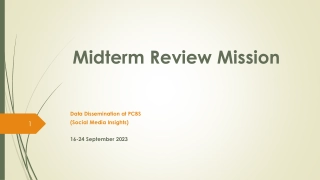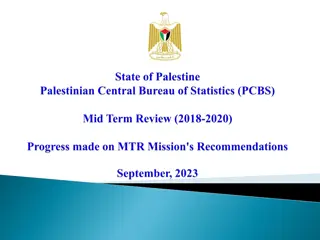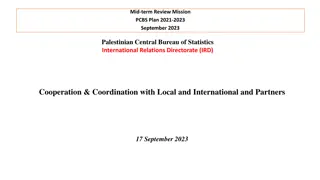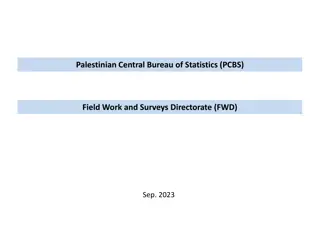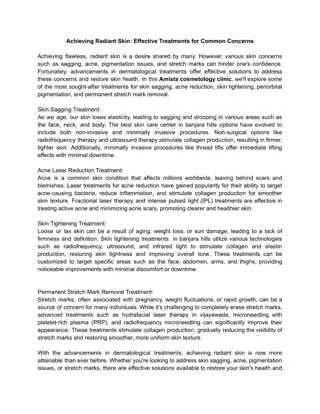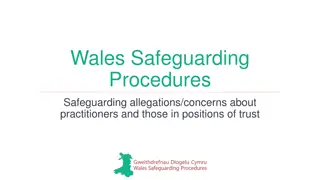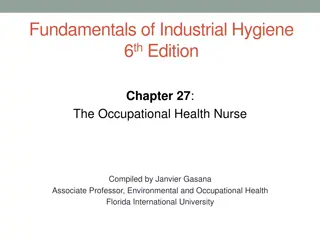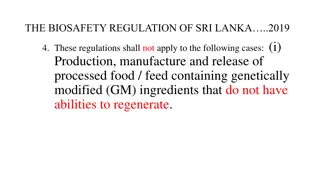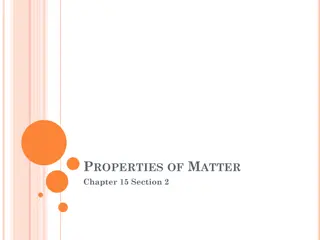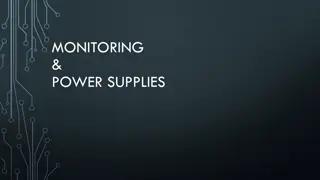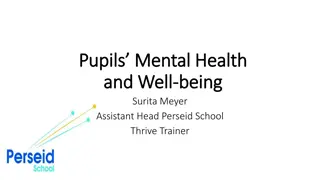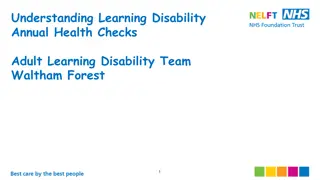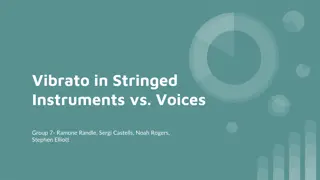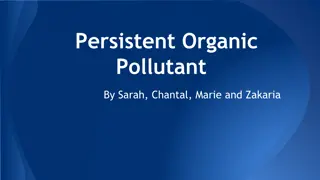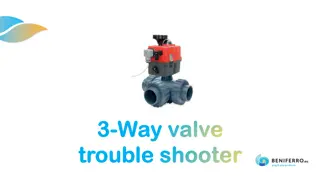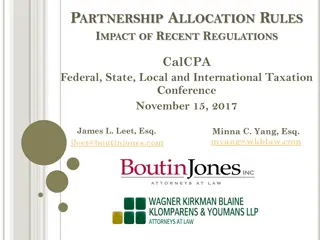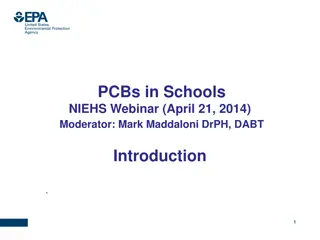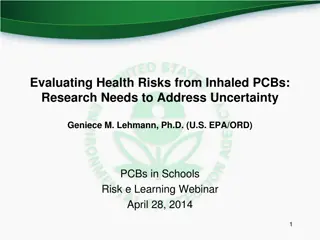PCBs: Properties, Health Concerns, and Regulations
PCBs are viscous liquids used in various applications, posing health risks and environmental concerns. Learn about their properties, regulatory history, disposal options, and more. Discover the impact of PCBs on health and the environment, along with regulations governing their use and disposal.
Download Presentation

Please find below an Image/Link to download the presentation.
The content on the website is provided AS IS for your information and personal use only. It may not be sold, licensed, or shared on other websites without obtaining consent from the author.If you encounter any issues during the download, it is possible that the publisher has removed the file from their server.
You are allowed to download the files provided on this website for personal or commercial use, subject to the condition that they are used lawfully. All files are the property of their respective owners.
The content on the website is provided AS IS for your information and personal use only. It may not be sold, licensed, or shared on other websites without obtaining consent from the author.
E N D
Presentation Transcript
Amy Hensley USEPA Office of Resource Conservation & Recovery February 3, 2016
PCBs Properties and health concerns Regulatory history and structure Cleanup options Disposal options Resources Regional PCB Contacts Questions 2
Viscous liquid or solid Colorless Odorless Flame retardant Low vapor pressure Low electrical conductivity 3
Used as mixtures of congeners commonly called Aroclors (Aroclor 1254 54% chlorine by mass) 209 Congeners Oil & PCBs Water Lipophilic Stable to aging 4
Construction materials (ex. caulk, sealants, tiles, etc.) Dielectric fluid Heat transfer fluid Fluorescent light ballasts Hydraulic fluid Plasticizer Lubricants Cutting oils Vacuum pump fluid Gaskets & Damping felt 5
Adhesives Microscopy Carbonless copy paper (mounting media & immersion oil) Electric cable insulation Dedusting Agents Fuel tank coatings Pesticide extenders Inks and paints Casting Wax 6
Cancer Shown to cause cancer in animals and are probable human carcinogens 12 congeners are dioxin-like Non-Cancer Cause significant effects in the immune, reproductive, nervous, integumentary (skin), and endocrine systems Environmental Transport - Persistent, bioaccumulative, and can be transported long distances To this day, are found in animals, snow, and sea water in areas far away from where they were released into the environment. 7
Manufactured in U.S. from 1929 1979 TSCA passed by Congress in 1976 TSCA Section 6(e) banned the manufacture and use of PCBs Allowed EPA to authorize limited uses through a rulemaking process EPA issued regulations in 1979 on the use, manufacturing, processing, distribution in commerce, cleanup, and disposal of PCBs 1998 Mega Rule major changes to the cleanup and disposal sections TSCA PCB Regulations found at 40 CFR 761 PCB Cleanup and Disposal Program evolved separately from other cleanup and disposal programs Transferred the program to the RCRA Office (Office of Resource Conservation and Recovery) in 2007 but the regs stayed the same Regulations regarding the use of PCBs are still managed by the TSCA program office 8
Unlike RCRA, TSCA not delegated to States RCRA TSCA Regional Implementation Regional Implementation State Implementation 9
Key Sections of the Regulations: Definitions Use Authorizations Applicability Disposal/Storage options Cleanup options Import/Export Recordkeeping Sampling/analytical requirements 10
PCB Liquids Liquids like mineral oil dielectric fluid 50 ppm PCB Articles Transformers, capacitors, natural gas pipelines, electrical equipment PCB-Contaminated if 50-500 ppm; PCB if 500 ppm PCB Bulk Product Waste Non-liquids that are currently > 50 ppm and were manufactured to contain PCBs E.g. Caulk, paint, plastics May be disposed of in municipal landfills at any concentration If state allows & landfill is able / willing to accept it PCB Remediation Waste Contaminated from a spill or release of PCBs (e.g., soil, concrete, masonry) Regulatory requirements depend on spill date &sourceconcentration 11
Definition of PCB Remediation Waste This is a generalized depiction, see 40 CFR 761.3 for full detail Currently <50 ppm Currently 50 ppm Spilled any time Spilled Post-1978 Spilled Pre-1978 Source at any concentration Source < 50 ppm & Authorized Source 50 ppm or Unauthorized Source at any concentration NOT PCB Remediation Waste PCB Remediation Waste 12
Definition of PCB Remediation Waste This is a generalized depiction, see 40 CFR 761.3 for full detail Key Takeaway Currently <50 ppm Currently >50 Point: Even if the material is < 50 ppm, it may still Spilled any time be regulated Spilled Post-1978 Spilled Pre-1978 Source at any concentration Source 50 ppm or Unauthorized Source at any concentration Source < 50 ppm & Authorized NOT PCB Remediation Waste PCB Remediation Waste 13
PCB NOT PCB Remediation Waste Remediation Waste* b c a No cleanup or disposal obligations 761.61(a) 761.61(b) 761.61(c) Self Performance Based Disposal Option Risk Based Cleanup & Disposal Implementing Cleanup Option No interaction with EPA Requires EPA approval No notification required Any landfill Must notify EPA Any cleanup and/or disposal plan may be submitted Sampling requirements are prescriptive All PCB Remediation Waste must go to a TSCA facility Depends on EPA finding of no unreasonable risk of injury to health or env Can send < 50 ppm to municipal landfill Must remove all PCB waste > 1 ppm * PCB Remediation Waste resulting from a spill or release before 1978 is not subject to the cleanup requirements of the regulations (unless the RA makes a finding), but is subject to the disposal requirements if it is picked up (see 40 CFR 761.50(b)(3)). 14
The general, most conservative disposal options are a TSCA-approved landfill (for non-liquids) or a TSCA-approved incinerator. Permitted by Rule Certain decon methods (761.79(b)) Scrap Metal Recovery Ovens (761.72) High Efficiency Boilers (761.72) Other disposal options are available depending on the media, concentration, and the cleanup option. Non-TSCA Options RCRA C landfills RCRA D & other non-hazardous landfills EPA issues TSCA approvals to: Incinerators (761.70) Landfills (761.75) Alternatives Technologies to Incineration (761.60(e)) (e.g., chemical dechlorination or thermal desorption) Alternative Decontamination (761.79(h)) Risk-Based Disposal Approvals (761.61(c) & 761.62(c)) Coordinated Approvals (761.77) If already has permit through other authority, like RCRA The permit must be no less stringent in protection of health or the environment than the applicable TSCA requirements 15
Comprehensive Q & A Manual Commonly asked questions on all manner of topics Sampling Guidance How to sample natural gas pipeline, apply a grid sampling plan, do wipe sampling, etc. Spill Cleanup Policy Guidance An enforcement policy that applies to spills less than 72 hours old Checklists for 61(a) and 61(c) cleanup applications Excellent resource for those submitting cleanup plan A more complete list of PCB guidance can be found at the EPA website under Interpretive Guidance at http://www3.epa.gov/epawaste/hazard/tsd/pcbs/index.htm (Note: This link will change in the near future to a yet to be determined address, if this link no longer works for you, you should be able to find the page by Googling EPA and PCBs. Sorry for any inconvenience.) 16
Equipment - Labels, trade names, manufactured 1950-79 Building materials Labels, built or renovated 1950-79 Cleanup Areas Wherever the following was manufactured, stored, used, serviced, or transported Electrical equipment, hydraulic presses, vacuum systems, natural gas compressor systems, aircraft hydraulic oils, dust suppression, etc. However, even without indications of these, PCBs may still be present Labels were not required prior to 1979 Servicing of uncontaminated equipment has led to contamination and unintentional dilution Some uses were not well recorded 17
Contact your EPA Regional PCB Coordinator early as soon as you think you might have or know you have PCBs on your cleanup site. Why? Because the PCB regulations require a separate and distinct process that often requires EPA notification/approval, delays are likely if EPA is not involved early. 18
Region PCB Coordinator 1 Kim Tisa 2 Mark Bean 3 Kelly Bunker 4 Ken Feely 5 Peter Ramanauskas 6 Jim Sales 7 Mike Dandurand 8 Brenda South 9 Carmen Santos 10 Michelle Mullin Contact Number 617-918-1527 732-321-6606 215-814-2177 404-562-8512 312-886-7890 214-665-6796 913-551-7504 303-312-6446 415-972-3360 206-553-1616 Contact Email Tisa.kimberly@epa.gov Bean.mark@epa.gov Bunker.kelly@epa.gov Feely.ken@epa.gov Ramanauskas.peter@epa.gov Sales.james@epa.gov Dandurand.michael@epa.gov South.brenda@epa.gov Santos.carmen@epa.gov Mullin.michelle@epa.gov http://www3.epa.gov/epawaste/hazard/tsd/pcbs/pubs/coordin.htm 19
Subpart A: General 761.1 Applicability 761.2 Assumptions 761.3 Definitions 761.19 References Subpart D: Storage and Disposal (continued) 761.65 Storage for disposal 761.70 Incineration 761.71 High-efficiency boilers 761.72 Scrap metal recovery ovens & smelters 761.75 Chemical waste landfills 761.77 Coordinated approvals 761.79 Decontamination Subpart B: Manufacturing, Processing, Distribution in Commerce, and Use 761.20 Prohibitions 761.30 Authorizations 761.35 Storage for reuse Subpart E: Exemptions 761.80 Manufacturing, processing, and distribution in commerce exemptions Subpart C: Marking 761.40 Marking requirements 761.45 Marking formats Subpart D: Storage and Disposal 761.50 Applicability 761.60 Disposal requirements 761.61 PCB remediation waste 761.62 PCB bulk product waste 761.63 PCB household waste 761.64 Waste from R & D activities Subpart F: Transboundary Shipments for Disposal 761.91 Applicability (Import/export) 761.93 Import for disposal 761.97 Export for disposal 761.99 Other transboundary shipments 21
Subpart M: Natural gas pipeline sampling Subpart G: PCB Spill Cleanup Policy 761.120 Scope 761.123 Definitions 761.125 Requirements for PCB spill cleanup 761.130 Sampling requirements 761.135 Compliance and enforcement Subpart N: Characterization sampling for 761.61 Subpart O: Cleanup verification sampling for 761.61 Subpart J: General Records and Reports 761.180 Records and monitoring Subpart P: Sampling locations for non- porous surfaces Subpart Q:Validation of alternate sampling & analysis Subpart K: PCB Waste Disposal Records and Reports 761.202 EPA identification numbers. 761.205 Notification of PCB waste activity (EPA Form 7710-53). 761.207 - 761.217 Manifesting 761.218 Certificate of disposal. 761.219 One-year exception reporting. Subpart R: Sampling of PCB bulk product waste Subpart S: Double wash-rinse procedure Subpart T: Validating alternative decon solvents 22
Amy Hensley US EPA Office of Resource Conservation & Recovery Hensley.amy@epa.gov
